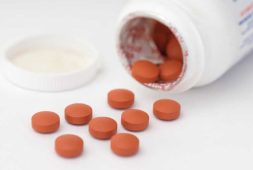
Scientists have developed what they’re calling an ‘invisibility cloak’ for cancer drugs, and any doctor or researchers that happens to be a Harry Potter fan would understand what this means.
This “cloak” is meant to hide ‘good bacteria’ from the immune system, so that it can reach the cancerous tumors without being detected. As a result, these so-called masked probiotics may just revolutionize cancer therapy. In fact, experiments done in mice have shown that they have been able to wipe out the diseased cells.
The hope is that this technique will be able to work even better in humans, who are said to be 250 times more sensitive to bacteria.
According to biomedical engineer Professor, Tal Danino, “What is really exciting about this work is we are able to dynamically control the system. We can regulate the time bacteria survive in human blood, and increase the maximum tolerable dose.”
Danino added, “We also showed our system opens up a new bacteria delivery strategy in which we can inject bacteria to one accessible tumor, and have them controllably migrate to distal tumors such as metastases, cancer cells that spread to other parts of the body.”
Many times, the infection fighting T cells sometimes fail to tell apart the good and bad bacteria. But with this new technology, this genetically engineered “microbial encapsulation system” will help solve this issue.
In nature, there is process known as CAP, or capsular polysaccharides, which is a coating of sugary polymers bugs use to protect themselves from a predatory attack.
PhD student in the lab, Tetsuhiro Harimoto, explains, “We have shown proof of concept in mouse models.But given that humans are 250 times more sensitive to bacterial toxins than mice, we expect our results may have an even bigger effect on human patients than on mice.”
He went on to share, “We hijacked the CAP system of a probiotic E. coli strain Nissle 1917. With CAP, these bacteria can temporarily evade immune attack. Without CAP, they lose their encapsulation protection and can be cleared out in the body. So we decided to try to build an effective on/off switch.”
They named it iCAP, short for inducible CAP, after they tweaked the structure with a protein named IPTG that can program and alter the E. coli cell surface. Then the Columbia University team, located in New York, changed the length of survival in human blood by tuning amounts of the small molecule.
A growing area of interest in cancer research happens to be bacteria-based immunotherapy, which researchers currently trying out a variety of techniques to see how to use this technology. But there are quite a few challenges that this new alternative form of treatment has faced. This is due to the fact that unlike traditional medications, this new technology allows bacteria to thrive and live, as well as breed within the body.
Many times, the bacteria is also detected as foreign and dangerous by the immune system of the body, and in turn it causes high inflammatory response.
It’s explained as having ‘too much means high toxicity due to over-inflammation or rapid bacteria elimination. Too little means no therapeutic efficacy.’
Dr. Jaeseung Hahn shared, “In clinical trials, these toxicities have been shown to be the critical problem, limiting the amount we can dose bacteria and compromising efficacy. Some trials had to be terminated due to severe toxicity.”
In the mouse tumor models, they showed that the iCAP increased to the ‘maximum tolerable dose tenfold’ due to the bacteria avoiding the immune cells. Then over time, the invisibility cloak disappeared, which meant that the bacteria was removed in other parts of the body, and without side effects at that.
Then in further testing, the system was made to create an anti-tumor drug. Lab rodents showed that their bowel and breast cancers shrank substantially as compared to those in the control group.
Notably, over 80 different types of CAP exist just for E. coli, and even more for the other types of bacteria species which can be created using the same approach. Moreover, CAP is not the only type of molecule which bacteria have on their surface, which means that other types of molecules may be controlled using a similar process.
In the same way, other control systems – like biosensors – can also be used to individually control surface properties of ‘good’ or therapeutic bacteria.
“While there is a good deal of laboratory research showing various ways to engineer microbes, it is very difficult to apply these powerful therapies to a complex animal or human body,” said Mr. Harimoto.
Prof Kam Leong added, “Bacterial cancer therapy holds unique advantages over conventional drug therapy, such as efficient targeting of the tumor tissue and programmable drug release. Potential toxicity has been limiting its full potential. The cloaking approach presented in this study may address this critical issue.”
You can read more about this in the Nature Biotechnology journal.



